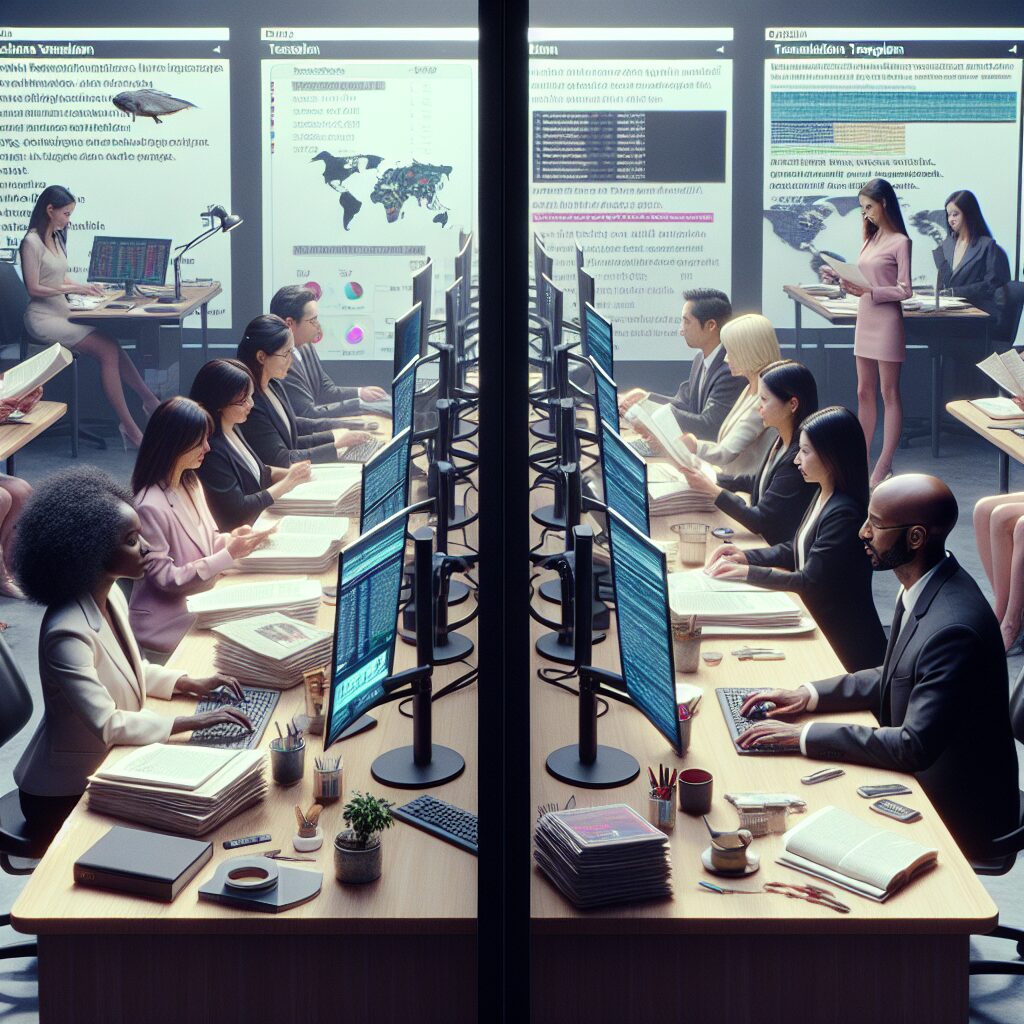About eldris
Clone.Eldris.ai empowers brands to instantly replicate and translate their websites for seamless global expansion. Our automated system delivers SEO-friendly, multilingual clones that launch in days, not months.
In This Article
- Website translation cost is influenced by word count, language, and method used.
- Manual agencies offer high quality but are often slower and more expensive.
- Automated tools bring speed and scale, with budget-friendly pricing models.
- SEO-friendly automation platforms can greatly aid international visibility.
- A hybrid strategy balances cost, quality, and launch speed effectively.
- EU expansion becomes feasible and compliant using smart translation automation.
Understanding Website Translation Costs in 2024
Factors That Influence Translation Pricing
When investing in multilingual online experiences, understanding the true website translation cost is essential. In 2024, several variables impact how much a business might spend to localise its digital presence. These include the number of target languages, the word count of the existing site, the complexity of the content, and the method of translation—automated tool versus human agency.
Manual translation agencies generally charge per word, with average rates ranging from £0.08 to £0.25, depending on language pair and subject matter complexity. Technical or legal content tends to push rates higher due to niche terminology. By contrast, automated translation platforms often offer monthly subscriptions or usage-based pricing models. Some may charge as little as £30 per month for basic plans or based on volume metrics such as words processed or pages translated.
Another key cost consideration involves ongoing maintenance. Websites constantly evolve, and keeping multilingual pages updated can represent a recurring expense. Manual agencies often require a new job quotation each time updates are made, whereas many automated tools offer real-time sync functionality, reducing ongoing translation costs significantly.

Speed Comparison: Automated Tools vs Translation Agencies
Time-to-Market for Multilingual Websites
Time is often of the essence in digital markets. The speed at which you can launch a multilingual website greatly affects your competitiveness and scalability. Automated website translation platforms have a clear advantage in this regard. Using automated systems, a 50-page website can be translated and live in multiple languages within a few hours to a few days, depending on integration and post-editing requirements.
Manual translation agencies, on the other hand, follow a more traditional workflow. First comes quotation and discovery, then translation, proofreading, and integration. This multi-step process means a 50-page website may take anywhere from two to eight weeks to fully launch in a different language. While quality is ensured, businesses may suffer from longer time-to-market.
For enterprises targeting fast international rollouts, this delay can become a strategic hindrance. An automated platform allows multilingual versions to be activated almost simultaneously with the original content. Thus, businesses save invaluable time in testing campaigns, engaging international audiences, and initiating SEO indexing in new regions.
“In today’s global digital economy, speed is not a luxury—it’s a necessity. Automated tools help reduce website translation cost without sacrificing launch timelines.”
Quality and Accuracy: Can Automation Compete with Humans?
One of the most debated aspects of website translation is quality. Manual agencies boast high standards, offering expert linguists with native fluency and subject matter expertise. These professionals perform in-depth cultural localisation, ensuring that idiomatic phrases, humour, and technical content resonate precisely with the target audience. The result is often flawless and culturally sensitive copy.
However, modern automated translation tools have come a long way. Leveraging neural machine translation (NMT) models, tools like DeepL and Google Cloud Translation have significantly reduced grammatical errors. Some platforms allow businesses to upload a glossary of preferred terms or integrate human post-editing workflows. While machine-only translations may still falter with nuance, hybrid models—automation enhanced by human review—can strike an optimal balance.
Ultimately, for industries requiring perfect localisation such as legal, pharmaceutical, or luxury retail, agencies still offer the upper hand. But for blogs, e-commerce listings, and technical documentation, automated solutions can deliver both accuracy and affordability with surprising efficiency.
SEO Implications of Each Translation Method
Beyond readability, the method of translation affects your site’s search visibility in different regions. When it comes to multilingual SEO, automated systems can either be a time-saver or a potential risk, depending on their technical capabilities. The best platforms today handle hreflang tags, auto-generate SEO-friendly translated metadata, and even allow custom redirects at scale—providing a strong foundation for international search engine optimisation.
Manual agencies typically do not handle the technical SEO implementation unless your contract includes web development services. You may receive a batch of translated content, but your team will need to manually enter SEO metadata and configure international targeting within your CMS and Google Search Console.
Consistency is also key. Automated tools give businesses the ability to quickly A/B test SEO strategies across countries. For example, you can test different translations of a product name and adjust based on CTR metrics. Such speed is difficult to achieve with manual workflows, making automation a strategic advantage for SEO-powered expansion.
Cost Breakdown: Manual Agencies vs Automation Software
Let’s take an in-depth look at overall website translation cost when comparing manual and AI-based solutions. Manual agencies typically follow a per-word pricing model. Translating a medium-sized website (approx. 30,000 words) into three languages could easily cost between £7,000 and £20,000. This figure excludes update and maintenance costs over time.
Automated tools generally charge subscription fees. A high-end plan might cost £250-£500/month but may include unlimited languages, automatic updates, and integrated SEO tagging. Over the course of a year, this model offers compelling ROI, especially for growing international businesses with dynamic content needs.
It’s vital to consider hidden costs. Agencies often add premiums for rush jobs or niche industries. They may not include VAT in quotes. Meanwhile, some automated tools charge extra for word limits, translation memory, or support, so aligning your budget with expected content velocity is crucial.
Many businesses now adopt a hybrid translation strategy: using automation for everyday workflows, while investing in human editing for flagship pages—a model that keeps costs down while maintaining brand credibility.
Ideal Scenarios: When to Choose Human vs Machine
Choosing between manual and automated translation depends entirely on your goals. Here’s how to make the decision easier:
- Choose Human Translation When: Your content includes legal disclaimers, complex product documentation, healthcare materials, or locally sensitive political/cultural references. The higher upfront cost is offset by precision and trustworthiness.
- Choose Automated Tools When: You’re launching an e-commerce platform across Europe, scaling SaaS documentation, or localising blogs and news rapidly. Continuous publishing models benefit from the scalability and lower website translation cost.
A useful rule of thumb: if the customer’s trust hinges on every single word, use an agency. But if speed and SEO testing matter more, automation might be your best option. For maximum flexibility, look for tools that enable human QA overlays.
Benefits of Automated Translations for EU Expansion
For businesses looking to grow across the European Union, automation offers strong strategic benefits. The EU comprises over 24 official languages and a wide range of regional dialects. Using manual localisation for each language quickly becomes unmanageable in terms of cost and manpower.
Automated translation tools unlock the ability to scale localisation uniformly across markets. With a unified dashboard and synchronised CMS integrations, businesses can launch localised pages for each EU country simultaneously. This parallel release improves branding, ensures compliance, and helps prevent competitors from gaining early SERP rankings.
Additionally, well-architected tools help businesses adhere to EU regulations like GDPR and ePrivacy directives. Automated platforms with built-in content scanning make it easier to localise cookie banners, privacy policies, and terms of service in every required language, reducing legal risk.
Potential Risks of Relying on Fully Automated Localisation
Despite its appeal, automation comes with risks. First, mistranslations can damage credibility or create legal liabilities. A bad product description might not just deter customers; it may violate consumer protection laws in some jurisdictions.
Moreover, automated systems often miss out on cultural relevance. Certain words and phrases may carry unintended connotations. For industries like fashion and hospitality, where cultural nuance is paramount, tone-deaf content can alienate users quickly.
Technical risks also exist. Poorly coded scripts and misconfigured hreflang tags can kill your SEO gains. Look for platforms that offer real-time monitoring, human support escalation, and advanced testing environments. And always consider a second pair of eyes for high-visibility content.
Case Study: EU Brand Scaling with Automated Translation
A mid-sized skincare brand based in the UK implemented an automated website translation platform to expand into France, Germany, and Italy. Initially, the internal team attempted manual translation. However, due to delays and spiralling costs—over £15,000 in three months—they pivoted to an automated solution with optional post-editing features.
Using a platform integrated with their Headless CMS, they launched new country versions within two weeks. SEO-ready templates and glossary controls ensured brand terminology remained consistent across markets. Their team later engaged a native-speaking freelancer for post-editing select pages related to customer service and return policies.
Within six months, they observed a 37% increase in organic traffic from non-English speaking markets. Bounce rates dropped significantly, and the investment paid for itself in less than five months. Transparent metrics, real-time previews, and continuous updates made it easy to manage content at scale. For them, balancing quality with website translation cost was entirely achievable through automation.
Read more about localisation tools at Learn more about Multilingual Website Strategies and Tools or how AI is reshaping content translation via Comprehensive website translation price overview.
Final Thoughts on Balancing Budget, Speed, and SEO
[CONCLUSION_CONTENT]
Balancing website translation cost, content quality, and time-to-market involves understanding the trade-offs. Automation offers unmatched speed and affordability, while manual agencies provide assurance and nuanced understanding. For businesses looking to capture international markets fast—but without harming SEO or UX—a hybrid solution emerges as the most strategic approach in 2024.
To dive deeper into selecting the right model for your business, explore Read a related article. You may also compare global localisation platforms using independent analysis from Actionable multilingual SEO tips for ecommerce.
Great guide on website-translations-vs-manual-agencies-cost-speed-seo – Community Feedback
How do website translation costs compare between automated tools and manual agencies?
Automated website translation tools are generally much cheaper than manual agencies, with costs often a fraction of the price. Manual agencies typically charge hourly or per-word, which adds up quickly for large sites.
Which is faster: automated website translation or manual localisation agencies?
Automated website translation delivers results in days, sometimes instantly for small sites, while manual agencies often require weeks or months due to human processes and project management overhead.
Do automated website translations work for SEO as well as manual localisation?
Modern automated translation tools can deliver SEO-friendly multilingual content, but manual agencies may still offer higher nuance and keyword optimisation. For most brands, automation covers key SEO basics efficiently.










